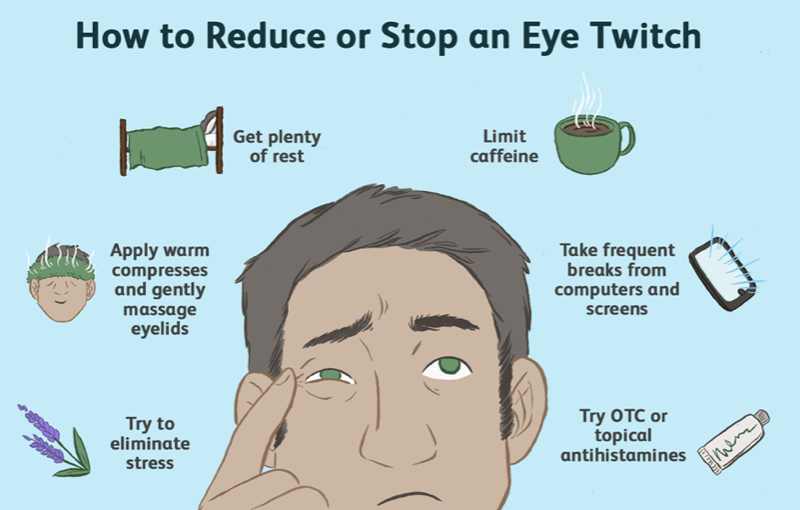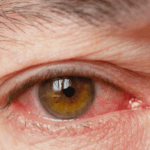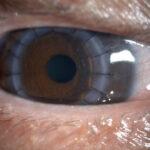Why is my eye twitching?
An eye twitch is an eye muscle or eyelid spasm that causes an involuntary or abnormal blinking of your eyelid. The lid moves every few seconds and lasts for a minute to two. In severe cases, the vision can be affected. Eye twitching can occur in both upper and lower lids.
Types
Generally, the three different types of eye twitching are eyelid myokymia, essential blepharospasm, and hemifacial spasm.
- Eyelid myokymia – This condition is usually benign where a mild spasm occurs in the lower or upper lid in either one or both eyes. Ocular myokymia can arise from stress, excessive caffeine, or tiredness.
- Essential blepharospasm – This is a bilateral, benign, and rare condition which typically causes frequent blinking and irritation in both eyes. Generally, it happens in middle to late adulthood and is more common in women than in men. The condition can gradually worsen over time, leading to symptoms such as light sensitivity, blurred vision, and partial or complete eyelid closure, and in certain cases, facial muscles can be involved.
- Hemifacial spasm – This condition will only affect one side of the facial muscle, causing spontaneous twitching of the eye along with the mouth, cheek, and neck. This is because a small artery is pressing on the facial nerve. It is more common in women than men, and especially in Asians. In severe cases, it may cause an inability to open the affected eye.
Causes
Eyelid twitching or spasms may be caused by:
- Eye irritation or strain
- Environmental irritants (wind or air pollution)
- Fatigue or lack of sleep
- Physical exertion or stress
- Intake of alcohol, tobacco, or caffeine.
- Medication side effects
Other ocular conditions that can cause twitching sometimes include:
- Corneal abrasion
- Uveitis
- Blepharitis
- Conjunctivitis (pink eye)
- Migraine episodes
- Dry eye
- Light sensitivity
In rare conditions, eye twitching can be symptomatic for people with brain or nerve disorders such as:
- Bell’s palsy (facial palsy)
- Dystonia Cervical dystonia (spasmodic torticollis)
- Oromandibular dystonia
- Multiple sclerosis (MS)
- Parkinson’s disease
- Tourette syndrome

Treatment
- Eyelid Myokymia
Generally no treatment is required as this condition will resolve spontaneously. However, a healthy lifestyle might help to prevent it by avoiding stress, getting plenty of rest, and reducing alcohol, tobacco, and caffeine intake. Sometimes, correcting refractive errors and applying lubricant to dry eyes can improve the condition. - Essential blepharospasm
Botulinum toxin injections are the most common treatment for blepharospasm. However, it can also be treated with medications, biofeedback, and surgery. This condition may require long-term treatment as it can cause significant functional impairment. - Hemifacial Spasm
A neurosurgical procedure known as microvascular decompression can generally successfully relieve facial spasms, although there are possible complications. Besides, botulinum toxin injections also help relieve eyelid and facial spasms. However, post-injection side effects are possible, such as minor bruising, temporary eyelid drooping, or temporary double vision.
Most minor cases of eyelid twitching will go away without treatment in a few days. However, if twitches are progressive and persistent for weeks to months, medical attention from an ophthalmologist is required without delay.






